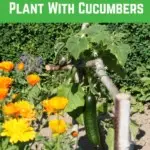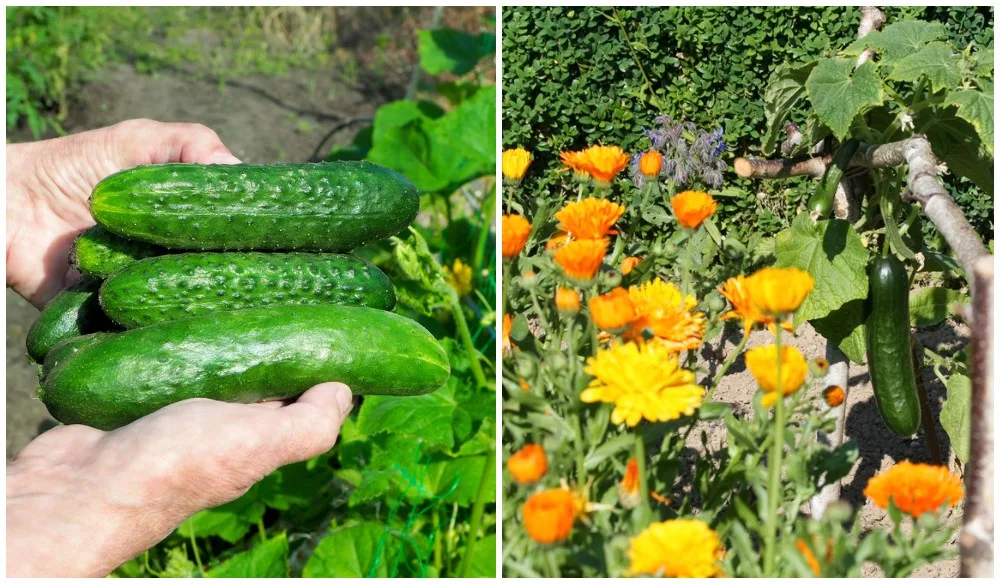
Chances are good that you found this article because you are thinking about planting cucumbers in your garden – and wish nothing but the best for their, and your, success.
Or perhaps these companions for garden cucumbers have found you. Say, you have already planted out your cucumbers, either from seed or transplants, casually heard about companion planting from a friend, or from Facebook, and are ready to learn more.
Whatever the case may be, know that companion planting rarely ever lets you down, and most times the rewards will be visible.
However, there are times when it is more or less effective.
Never let companion planting be a sole substitute for taking proper care of your garden (watering, weeding, fertilizing, mulching, etc.).
Also, keep in mind that companion planting doesn’t account much for the unpredictable weather. If it rains for weeks on end, it is not the fault of the plants, or their ability to thrive. Chalk it up to experience and replant if the season allows, or try again next year with a new strategy.
In a garden, anything can happen! Have fun and be willing to play around with what grows. Even if some veggies are misshapen and knobby, and even if it means that you get to eat some weeds in the meantime.
No one became a master gardener overnight, but we can all keep trying!
Benefits of companion planting
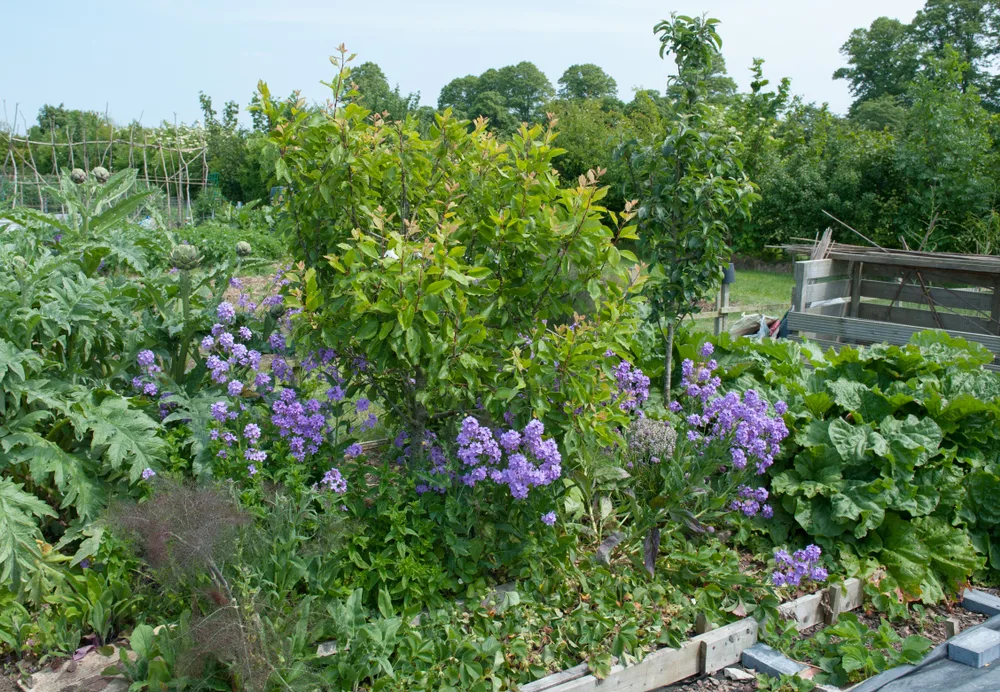
When you invest your time and energy in planting a garden, it often comes to light that you are on a quest for wholesome, nutritious and delicious food. To harvest that, you have to imagine several factors at once, all of which are vying for your attention.
You need to think about seeds and the layout of your garden, how much sun and how much shade it receives daily.
Depending on your climate you may need to consider irrigation, harvesting and storing of crops. And then comes companion planting to make it more complicated still.
Ask anyone who gardens this way, and they will proclaim that it works and that you should try it too!
A handful of benefits related to gardening with companion plants are:
- increased productivity
- natural pest control
- plant support – 3 sisters planting with corn, squash and beans
- ability to attract more pollinators
- save space in the garden – for example, planting deep-rooted asparagus and shallow-rooted strawberries together
- amend/improve the soil
The goal of companion planting is to form symbiotic relationships where plants provide for each other, in a friendly way. Anything from shade, to nutrients or physical support.
So, what do cucumbers prefer to be surrounded by?
Companion plants for cucumbers
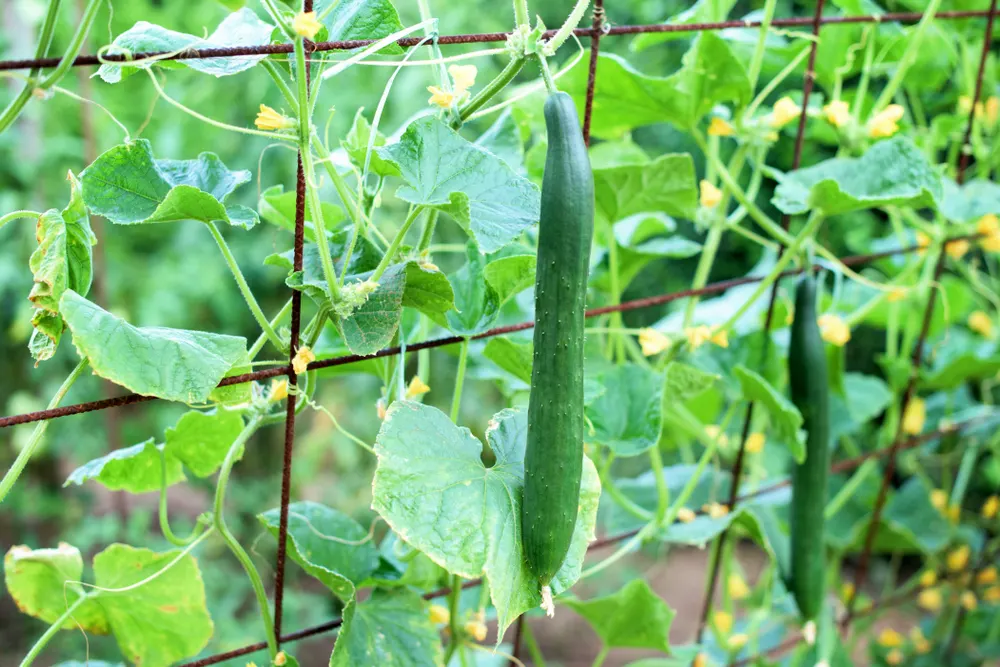
Most cucumbers (Cucumis sativus) are ready to harvest in about 50-70 days, making them a popular choice to grow in the garden. You can see, and eat, real results in a short amount of time.
That is, if you can keep them disease-free.
I’ve often read how easy cucumbers are to grow. If you are in the same boat, congratulations! However, growing from experience, I know that cucumbers can be problematic, especially in colder/wetter climates.
Cucumbers may suffer from bacterial wilt, powdery mildew, a mosaic virus or an attack from cucumber beetles. It’s not easy being green!
Companion planting can help overcome some of these challenges. Here are some suggestions of what to plant your cucumbers with for a more reliable crop:
1. Beans
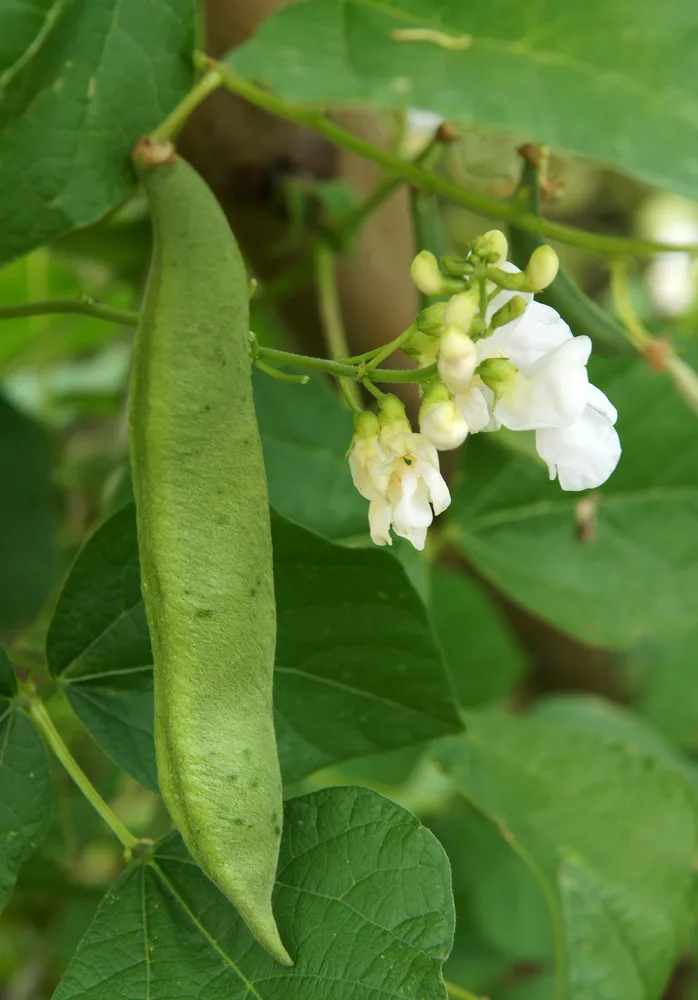
Legumes such as peas and beans will help to fix essential nitrogen in the soil. That being said, it is wise to plant bush beans with cucumbers for increased vigor of your cucumber crop.
It may be wiser still to use a shared trellis for both your pole beans and your cucumbers. Not only will it save you space in the garden, they will enjoy the company of each other too.
2. Beets
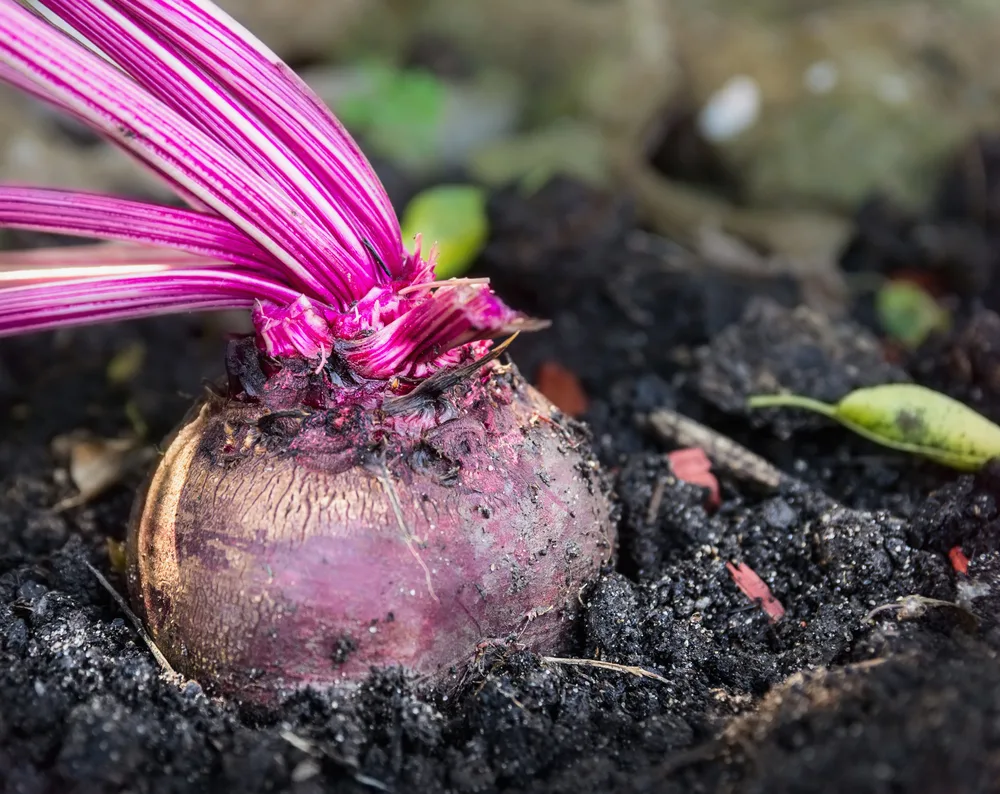
Often, in companion planting, we plant certain vegetables next to each other for reasons of disease prevention.
Other times the placement of plants can be neutral. Meaning that the relationship is neither harmful, nor beneficial. Such is the case with beets.
So, if you are looking for a place to plant more beets in your garden, go ahead and sow the seeds near your cucumber plants. By all means, go ahead and eat those highly nutritious beet greens!! A treat you can rarely find at the store.
3. Celery
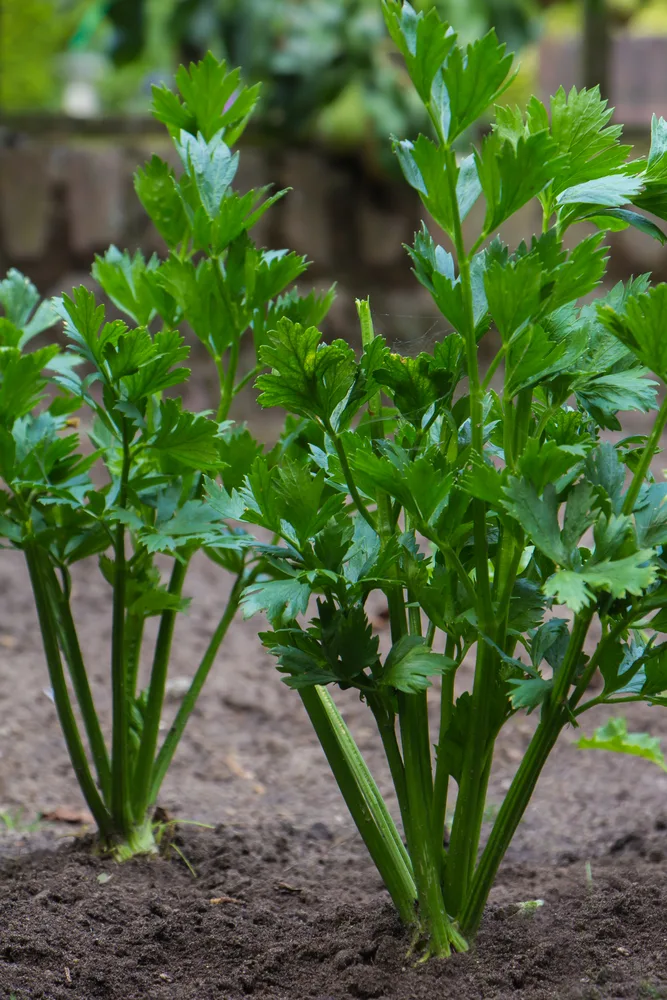
Celery is often planted near members of the cabbage family, for its strong scent is thought to deter the cabbage butterfly. It also enjoys the company of dill, which we will get to in a moment.
As far as combining celery and cucumbers, there is no superior reason to plant, or not plant them together. However, it is one of those more neutral pairings that makes it easier to space out the many kinds of vegetables in your garden.
With any size garden, you need as many as these neutral relationships as you can get.
4. Corn
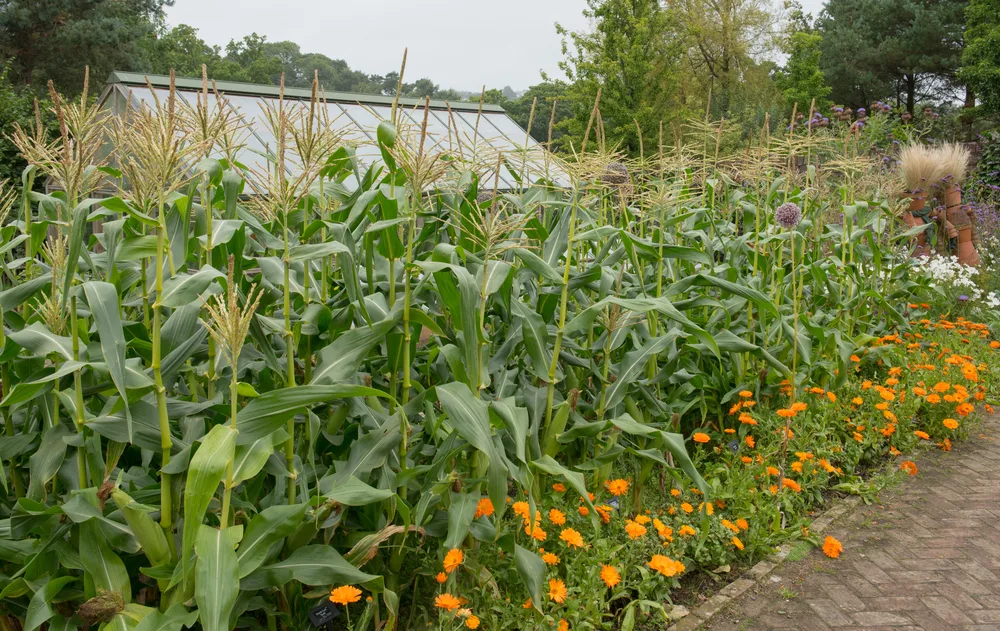
Companions in the human and pet world, frequently help each other out. Plants innately do this too.
Corn, like sunflowers, can act as a support for smaller varieties of cucumbers, should the corn be sufficiently tall when the cukes are planted/transplanted.
Keep this timing in mind when getting started with spring planting. Most of all, experiment with companion planting – and keep notes!
Just because it has worked for one gardener, doesn’t mean it will work the same good for you. It depends on your soil, the climate, the order of planting and more.
With time and experience it will be far easier, but don’t give up before you even get started. If one companion plant doesn’t work for you in your personal garden, another one surely will.
5. Dill
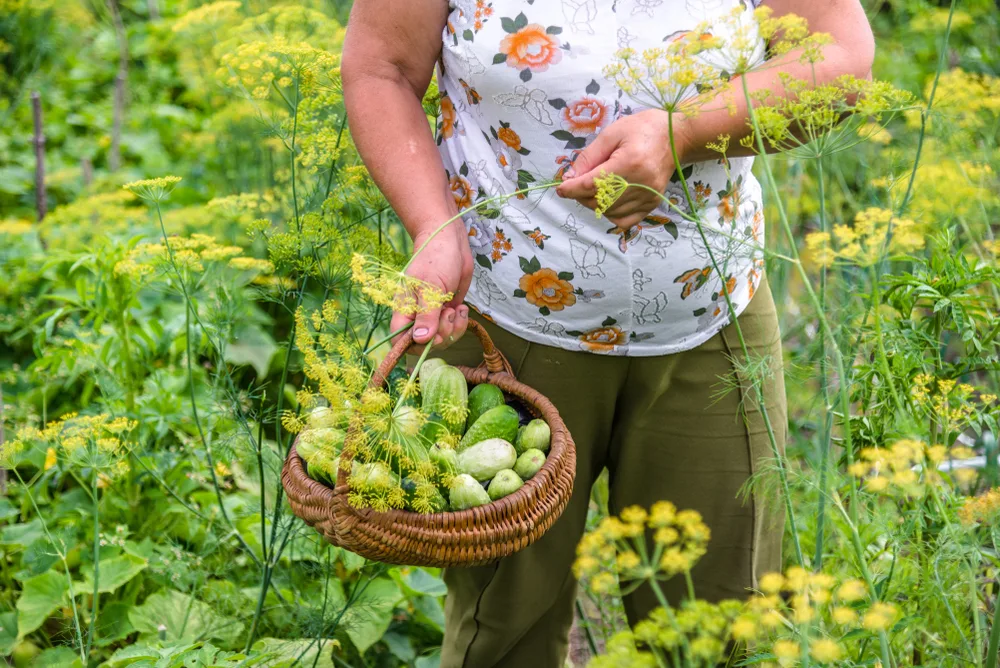
If you are going to have one spice crop in your garden, make it dill. Both the young, fresh green leaves, as well as the dill seeds, and dried flowers are perfect for pickling.
Dill also attracts loads of fly-by and crawl-by beneficial insects such as parasitic wasps and other pollinators. In an organic garden, you can never have too many of those.
You might also notice that dill has a slight effect on the flavor of your cucumbers. This is only beneficial if you enjoy the flavor of dill. Only plant it if you do.
6. Lettuce
If you are seeking a vegetable that is incredibly easy to grow, lettuce is your answer.
Sow a line of seeds and something is bound to emerge. Will it ever form a nice head like you buy from the store? Not always. That’s why some people prefer to grow leaf lettuce. It’s all salad greens once it is ripped up and coated with a homemade vinaigrette…
Lettuce, as a companion plant is good next to strawberries, radishes, carrots, and you guessed it, cucumbers. Again, for no special reasons, other than the fact that they do not dislike each other. For beneficial companion plants, that is reason enough.
7. Marigolds
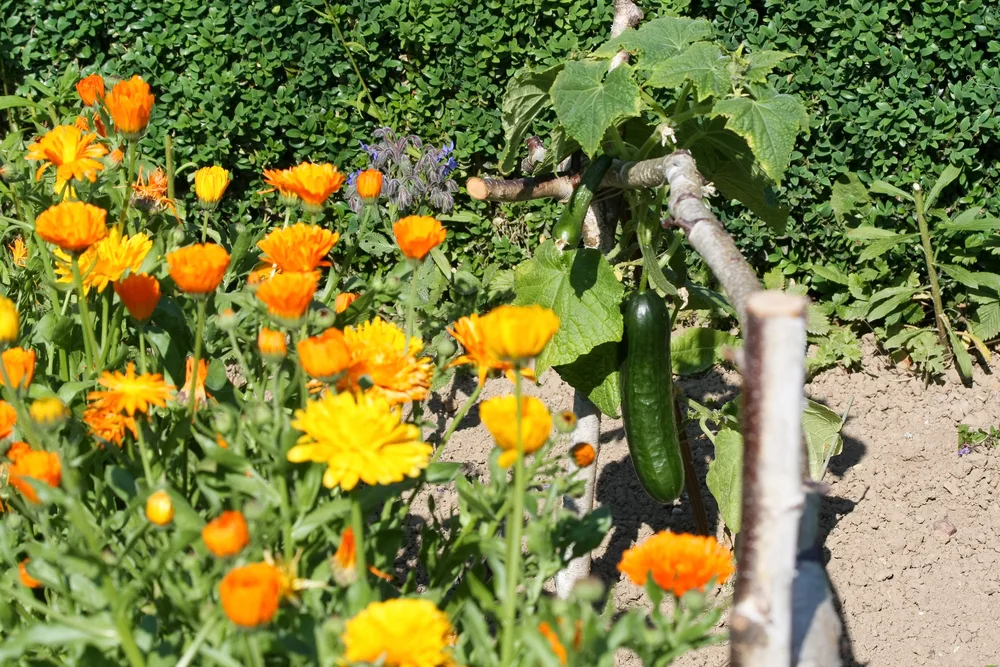
These useful flowers help to repel all sorts of beetles and insects in the garden. There are many reasons why you’d want to grow marigolds in your vegetable garden.
In Hungarian they are known as büdöske. When literally translated, “büdös” means “smelly”, and you will find them in just about every garden in the countryside.
Perhaps without even knowing why, most villagers plant them, they are abundantly and quietly doing their job of helping to protect the entire garden with their “fragrance”.
8. Nasturtiums
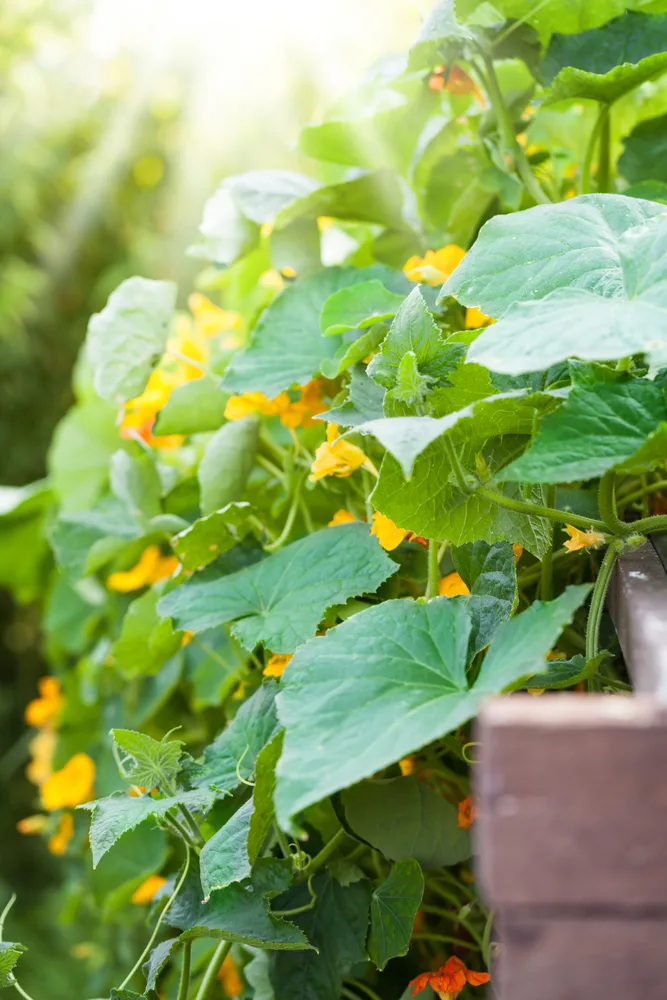
Another amazing flower to plant in your garden every year is nasturtiums.
You’ll find time and time again just how essential they are. Not only are they edible, straight from the garden, they can be used in herbal infused vinegars, or as a natural antibiotic tincture.
With regards to planting nasturtiums alongside cucumbers, not only do they have a similar low-growing and sprawling habit that looks beautiful, the nasturtiums also repel insects, such as thrips, aphids and other cucumber munching bugs.
9. Peas
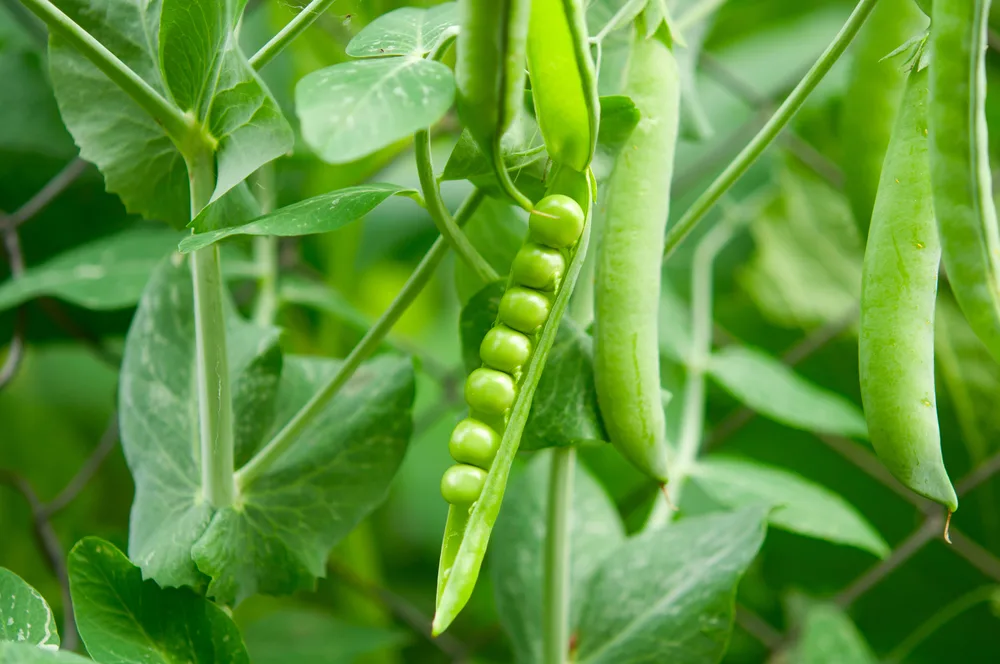
The same as with beans, peas also add to the nitrogen content in the soil. This by itself is not a high requirement for cucumbers, though it never hurts, since the N-P-K levels are slowly adjusting over time. This also depends on how often you fertilize, and with what type of fertilizer you apply.
Looks-wise, peas and cucumbers complement each other, at least in the beginning.
You also need to be mindful of timing when figuring out how to best “companion plant” your garden. As peas can be started – and harvested – earlier, then your cucumbers will have more space to start sprawling when their time comes to shine.
10. Radishes
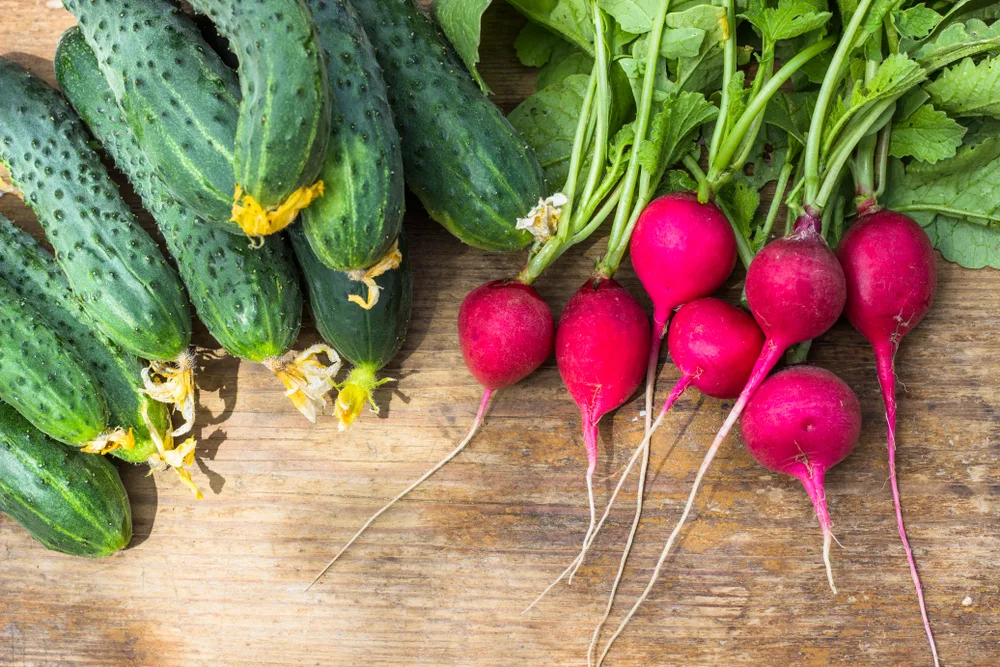
If you plant several lines of radishes in your garden, you know that it is best to stagger the planting, lest you be faced with eating 60 radishes in a single meal!
But what about growing cucumbers and radishes together?
It is useful to grow cucumbers to find out that they have one larger taproot, and several shallow roots that do not extend very far from the base. When you think about this root system, compared to root vegetables (carrots, turnips, parsley and parsnips), you will come to the conclusion the roots of cucumbers and root vegetables will not interfere with one another.
This, in turn, makes them great companion plants. It has been said that radishes may also help to deter damaging cucumber beetles. Companion planting is definitely worth a try!
11. Sunflowers
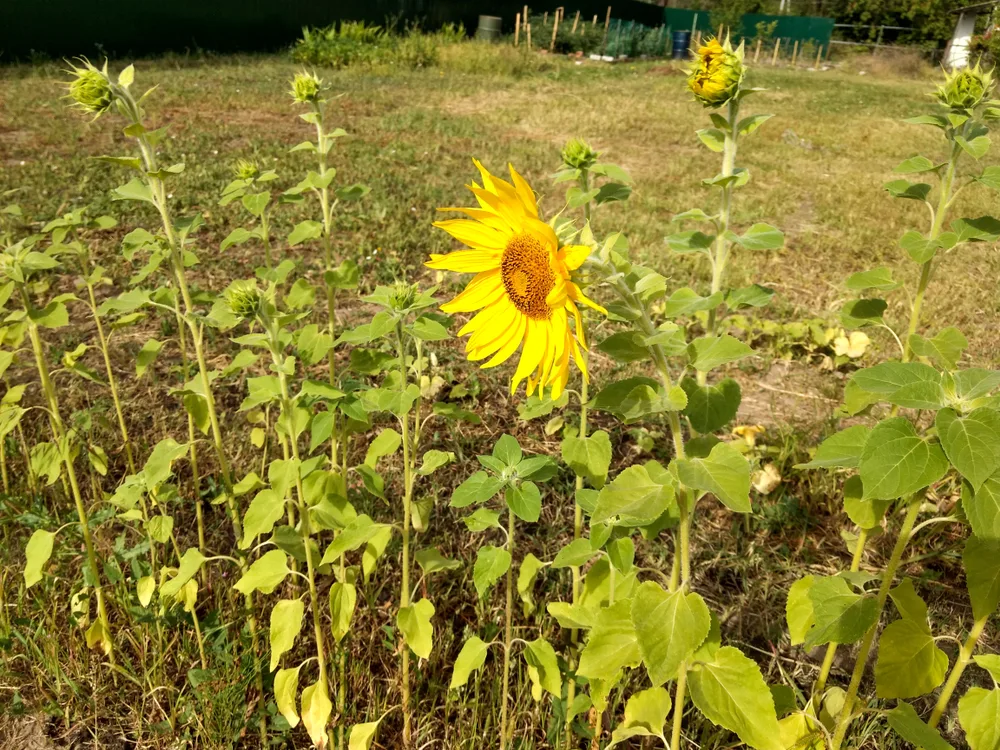
Remembering that most cucumbers have a tendency to climb, sunflowers, just like corn, make for a functional and natural trellis.
This, in turn, helps you to save space in your garden. By the time you are ready to harvest the sunflower seeds, the cucumbers will have been long harvested.
A word of advice: choose pickling cucumbers for trellising on sunflowers that are lighter weight. If the cukes become too heavy, they could fall off (slide down) the sunflowers and become damaged.
3 plants you shouldn’t grow next to cucumbers
With ideas in mind what to plant alongside your cucumbers, it is just as useful to know what they don’t like.
Cucumbers are pretty easy going plants without strong likes or dislikes, though there are three plants that stand out: aromatic herbs, melons and potatoes. Never plant these next to cucumbers.
1. Aromatic herbs
Basil is a definite no next to cucumbers. Though it will improve the flavor of your tomatoes. Plant it there instead!
Sage is reported to stunt the growth of cucumbers.
Peppermint, and mints in general, can be tricky herbs to grow in the garden. Not in the sense that they don’t grow well. In fact, they tend to grow overly well! This also lends to their ability to escape boundaries.
While mint can be grown in a pot, in an effort to tame it, it does still prefer the comfort of space in the soil. Since your mint is a sprawling perennial, you will have to find a place further down the row for your cucumbers.
Companion herbs to plant with cucumbers instead:
- catnip
- chives
- dill
- oregano (the aromatic exception)
- tansy
2. Melons
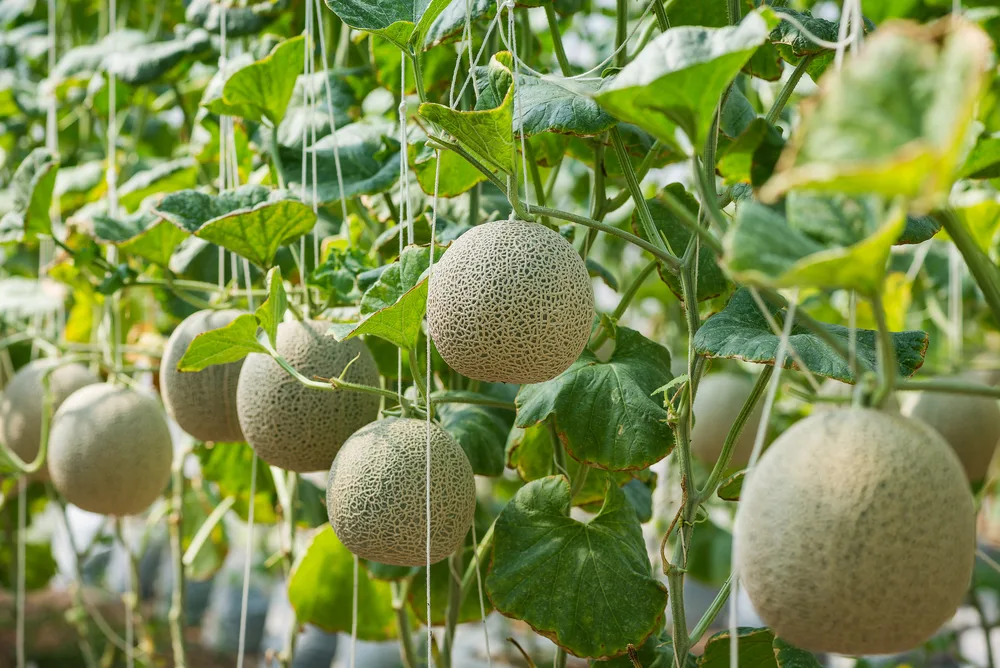
Insects that like to feast on melons also like to dine on cucumbers. And once they find and develop a taste for your canteloupe, they may find your pickling material alluring as well. In essence, when the two are planted together, along with other pumpkins and gourds, you are creating a mini-monoculture.
And life in the world of monoculture farming/gardening is never to your advantage. It takes lots of fertilizers and pesticides to keep the insects and other diseases at bay. The very thing we are trying to avoid with companion planting.
Melons can, however, be planted next to Brussels sprouts, broccoli, lettuce, okra, carrots, cauliflower and kale.
Fitting everything into your garden is like putting a puzzle together.
As opposed to an actual 2,000-piece puzzle, the larger your garden, the easier it is to plant. You may also find that the no-dig method of gardening comes to your advantage in combination with companion planting.
3. Potatoes
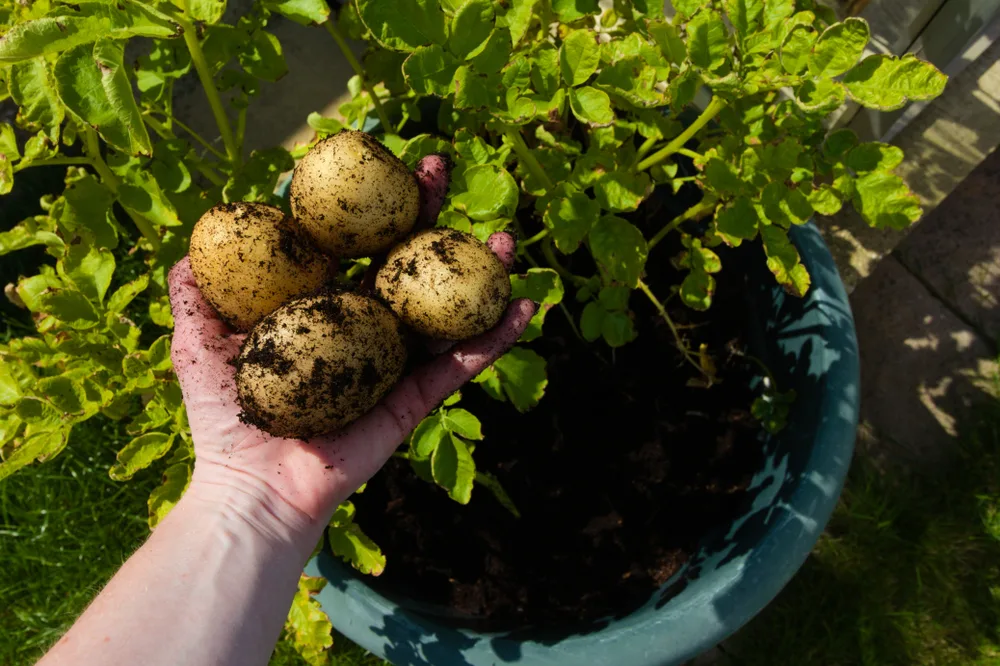
As you may have already noticed, potatoes are very heavy feeders in the garden. If you have cucumbers growing nearby, you may notice a difference in the quality and size of the harvestable fruit.
The primary reason not to plant potatoes and cucumbers together, is that cukes can encourage potato blight if the conditions are just right. If you have a later variety of potato planted in your garden, make sure it is planted as far away from your cucumbers as possible.
With smaller gardens, creating distance between plants may be hard, if not impossibly difficult.
Just be aware of potential problems and always keep an eye out for signs of disease, so that you can react as quickly as possible, should something go awry.
Planning your future garden with companion planting in mind
As your enjoyment of gardening really begins to take root in your backyard, you’ll find that companion planting really starts with the design of the garden itself.
If you already have plants in the ground that are seemingly “out of order”, or against the set of guidelines regarding companion planting, I am here to tell you not to fret over the small details.
With each season of working in (and with) the garden, you will find out what works best for you and your plants.
It is good to remember that guidelines are not rules. Though they are gardeners’ testimonials of what it means to harvest a wonderful crop.
So, if you want to know what to plant – or not to plant! – for instance next to your potatoes to increase their yield and minimize damage from Colorado potato beetles and other insects, you can find our potato companion planting guidelines here.
Just be sure to plant your cucumbers farther away from your potatoes!
This combination is a growing mistake.
The ever popular topic of companion plants for tomatoes, includes beans, squash, as well as cucumbers. But be sure to stay away from planting tomatoes with Brassicas, such as cabbage, broccoli and kohlrabi.
And never plant tomatoes with potatoes!
Even if they taste wonderful together in a meal, they do not make the greatest of friends in the garden.
The best way to learn about companion planting, is to keep trying new ways of growing and see what works best in your garden. Then share your companion planting success (and failures) with others. You can also share your bountiful harvests too!

Get the famous Rural Sprout newsletter delivered to your inbox.
Including Sunday ramblings from our editor, Tracey, as well as “What’s Up Wednesday” our roundup of what’s in season and new article updates and alerts.


